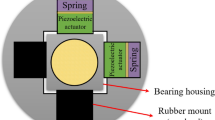Abstract
The multirotor UAV is a typical k-out-of-n pair: G model, which means that the two rotors distributed on the same axis must be synchronized operating. That is to say, if a rotor is failed, then the opposite one soluble shut down to keep the UAV in a balanced state. However, the above-mentioned model does not consider the effect of torque generated by rotating rotors. Thus, the neutralization of torque, which is ignored by k-out-of-n pair: G model, must be considered. In this situation, we employ the k-out-of-n pair: G balanced model to describe the balanced pattern of the multirotor UAV. We use the finite Markov chain imbedding approach to establish the system reliability calculating equations for the UAV and we also derive the performance evaluation indexes, the mean residual capacity and the expected time to failure, which can be used to determine the usage of the UAV. Then, we use some numerical examples to demonstrate it is worthy of involving the balance pattern in the system modeling process, otherwise, the we may obtain an over optimistic reliability evaluation result that misguides the operation of the UAV.
Similar content being viewed by others
References
Hong, S., Lv, C., Zhao, T., et al.: Cascading failure analysis and restoration strategy in an interdependent network. J. Phys. A Math. Theor. 19(49), 195101 (2016)
Hong, S., Wang, B., Ma, X., et al.: Failure cascade in interdependent network with traffic loads. J. Phys. A Math. Theor. 48(48), 485101 (2015)
Hong, S., Zhu, J., Braunstein, L., et al.: Cascading failure and recovery of spatially interdependent networks. J. Stat. Mech. Theor. Exp. 10, 103208 (2017)
Hong, S., Yang, H., Zhao, T., et al.: Epidemic spreading model of complex dynamical network with the heterogeneity of nodes. Int. J. Syst. Sci. 11(47), 2745–2752 (2016)
Hong, S., Zhang, X., Zhu, J., et al.: Suppressing failure cascades in interconnected networks: Considering capacity allocation pattern and load redistribution. Mod. Phys. Lett. B 5(30), 1650049 (2016)
Hua, D., Elsayed, E.: Degradation analysis of k-out-of-n Pairs: G balanced system with spatially distributed units. IEEE Trans. Reliab. 65(2), 941–956 (2016)
Hua, D., Elsayed, E.: Reliability approximation of k-out-of-n pairs: G balanced systems with spatially distributed units. IISE Trans. 50(7), 616–626 (2018)
Fu, J., Koutras, M.: Poisson approximations for 2-dimensional patterns. Ann. Inst. Stat. 46(1), 179–192 (1994)
Fu, J., Koutras, M.: Distribution theory of runs: a Markov chain approach. J. Am. Stat. Assoc. 89, 1050–1058 (1994)
Cui, L., Xu, Y., Zhao, X.: Developments and applications of the finite Markov chain imbedding approach in reliability. IEEE Trans. Reliab. 59(4), 685–690 (2010)
Lin, C., Cui, L., Coit, D., Lv, M.: Reliability modeling on consecutive-kr-out-of-nr: F linear zigzag structure and circular polygon structure. IEEE Trans. Reliab. 65(3), 1509–1521 (2016)
Lin, C., Cui, L., Coit, D., Lv, M.: Performance analysis for a wireless sensor network of star topology with random nodes deployment. Wireless Pers. Commun. 97(3), 3993–4013 (2017)
Hua, D., Elsayed, E.: Reliability estimation of k-out-of-n Pairs: G balanced systems with spatially distributed units. IEEE Trans. Reliab. 65(2), 886–900 (2016)
Acknowledgements
This research is supported by National Natural Science Foundation of China with granted No. 71801198 and 61773001. The authors are appreciated to the National Key Research Program with granted No. 2019YFB1706001 and to the Industrial Internet Innovation Development Project with granted No. TC190H468.
Author information
Authors and Affiliations
Corresponding author
Editor information
Editors and Affiliations
Rights and permissions
Copyright information
© 2020 Springer Nature Switzerland AG
About this paper
Cite this paper
Lv, M., Lin, C., Ma, T., Hong, S. (2020). Performance Evaluation of Multirotor UAV by Considering the Balanced Pattern. In: Chen, X., Yan, H., Yan, Q., Zhang, X. (eds) Machine Learning for Cyber Security. ML4CS 2020. Lecture Notes in Computer Science(), vol 12487. Springer, Cham. https://doi.org/10.1007/978-3-030-62460-6_41
Download citation
DOI: https://doi.org/10.1007/978-3-030-62460-6_41
Published:
Publisher Name: Springer, Cham
Print ISBN: 978-3-030-62459-0
Online ISBN: 978-3-030-62460-6
eBook Packages: Computer ScienceComputer Science (R0)




